Decoding Cover 1: An In-Depth Look at the Popular NFL Coverage
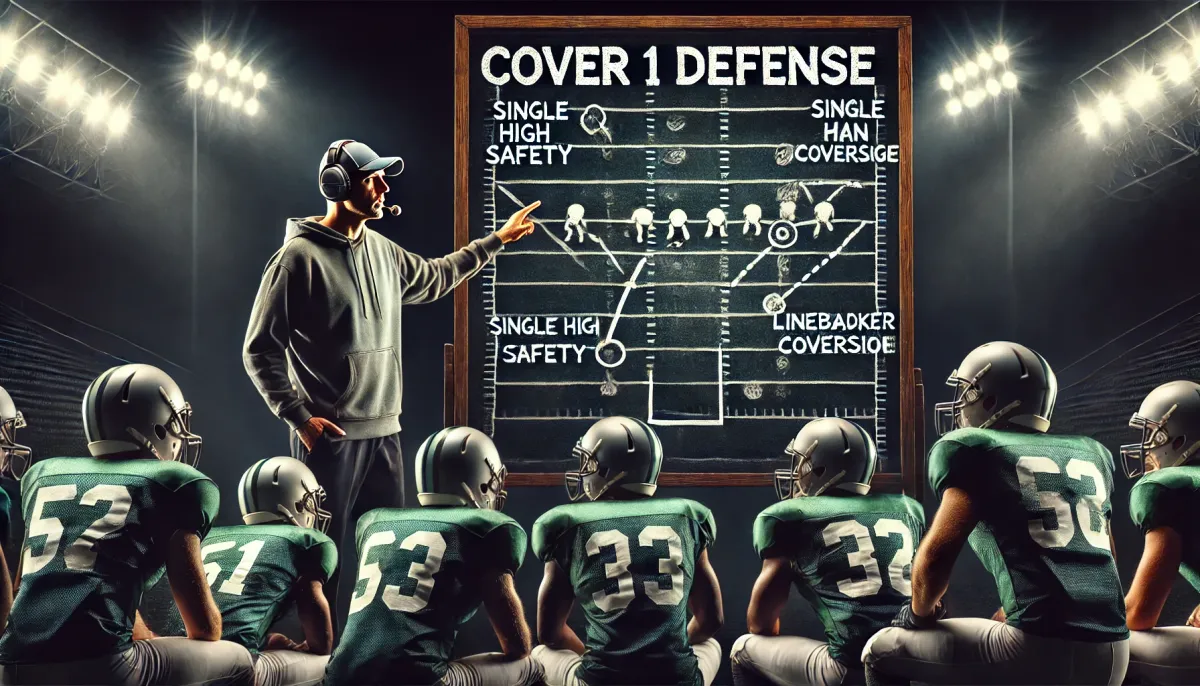
In the complex world of football, understanding the nuances of various defensive coverages is crucial for a quarterbacks and offensive coordinator success. One such coverage that demands thorough comprehension is Cover 1. In this blog post, we will delve into the intricacies of Cover 1, advantages, drawbacks, and variations (e.g. Hole, Rover/Lurk/Robber and Dog).
Why Defenses Play Cover 1
- Aggressive Man-to-Man Defense: Cover 1 allows teams to play an aggressive man-to-man defense, which can disrupt route timing and force a high level of accuracy for quarterbacks.
- Run Support: By employing a single high safety, teams can allocate more players to the line of scrimmage, providing an additional body in the run box.
- Simplified Decision-Making: With each defender responsible for their assigned receiver, Cover 1 simplifies decision-making for defensive players. This clarity allows athletes to focus on winning their individual battles.
From experts who work with 25+ NFL QBs, get personalized QB-specific throwing, arm care, lifting, speed training and biomechanical analyses for your high school team by booking a call here!
Why Defenses Do Not Play Cover 1
- Susceptibility to Big Plays: The single high safety can become vulnerable if receivers manage to break free from their defenders. With only one player providing deep support, Cover 1 can potentially expose teams to big plays down the field.
- Requires Elite Athleticism: Cover 1 demands a high level of athleticism from defenders to effectively match up against offensive players. This requirement may be a limiting factor for teams lacking sufficient talent.
- Struggles against Bunch Formations: Offensive bunch formations can create confusion for Cover 1 defenses, causing breakdowns in man-to-man assignments and leaving receivers open for big gains.
Variations of Cover 1: Dog, Hole, and Rover
Cover 1 Hole:
The "hole" variation features a linebacker playing visual on the quarterback as extra body presence in the middle of the field. They are typically assisting against crossing routes or in breaking routes (e.g. shallow or slant). Cornerbacks are typically instructed to play with outside leverage because they know if they get beat inside they have help from the "hole" linebacker and the post high safety. If a wideout is in a very plussed out split (closer to the sideline) then outside corners may employ head up or inside leverage and use the sideline as a defender.
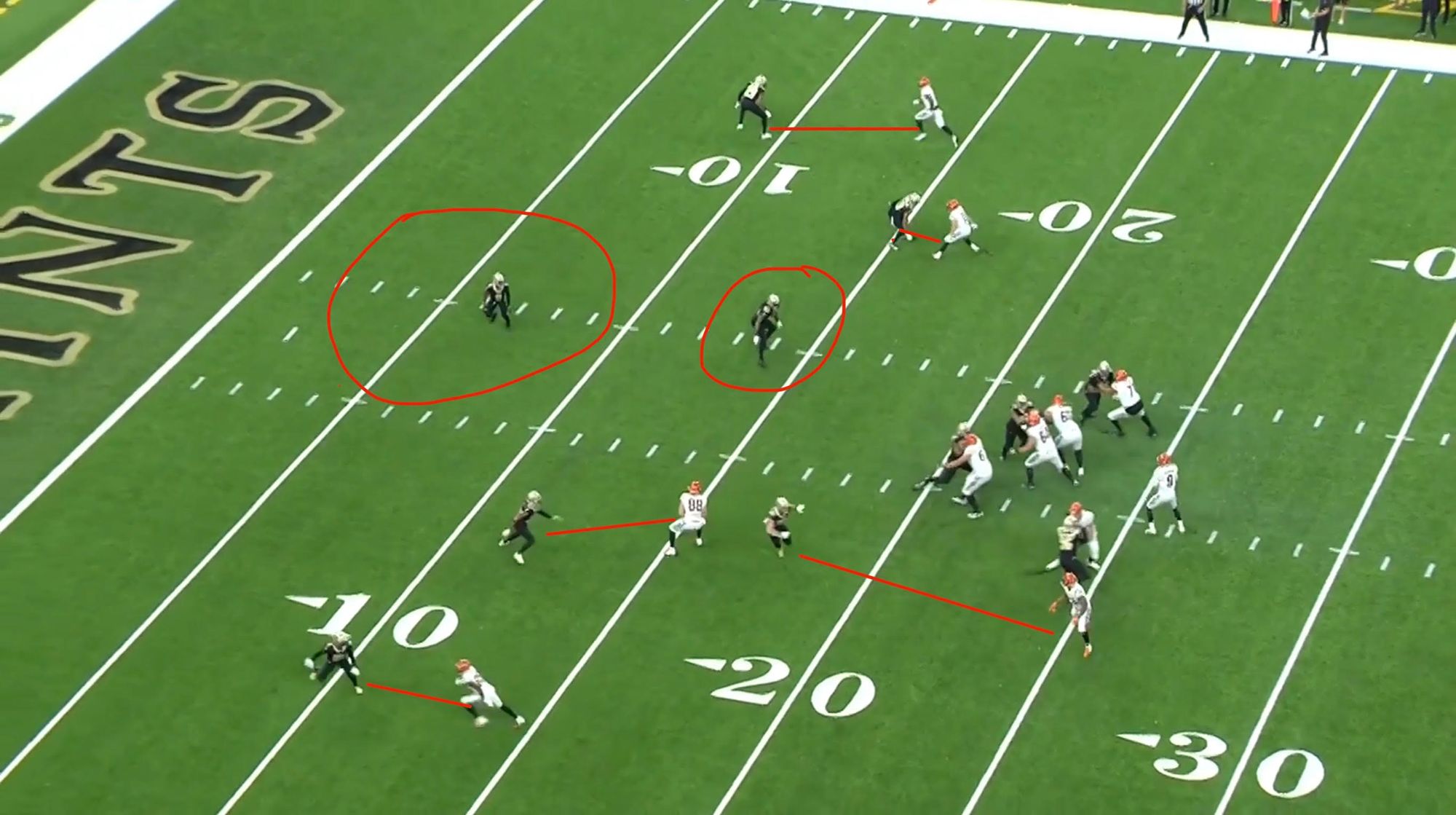
Cover 1 Rover/Lurk/Robber:
The "rover/lurk/robber" variation is when a safety drops down to play the hole location. Traditionally, rover or robber means the safety dropping down is coming away from the passing strength and lurk means he is dropping down to the side of the passing strength (will cover passing strength in future blog). This player typically is playing visual on the quarterback and providing body presence for in breaking routes. Sometimes the Rover/Lurk safety will look to double team the offensives best wideout e.g. Justin Jefferson. Similarly to Cover 1 Hole, cornerbacks are taught to play with outside leverage as they know they have help from the rover on in-breakers. If a wideout is in a plussed split they can amend their leverage accordingly.

Cover 1 Dog/Blitz:
In this variation, the defense brings a linebacker or defensive back on a blitz, while other defenders remain in man-to-man coverage. Oftentimes a "green dog" occurs if the blitzer is blocked by the running back. The defender who was supposed to cover the running back now adds on to the blitz because his man assignment blocked the blitzer. In contrast to Hole and Rover the cornerbacks typically play head up to inside leverage because they no longer have inside body presence for in-breaking routes (shallows, slants etc.).
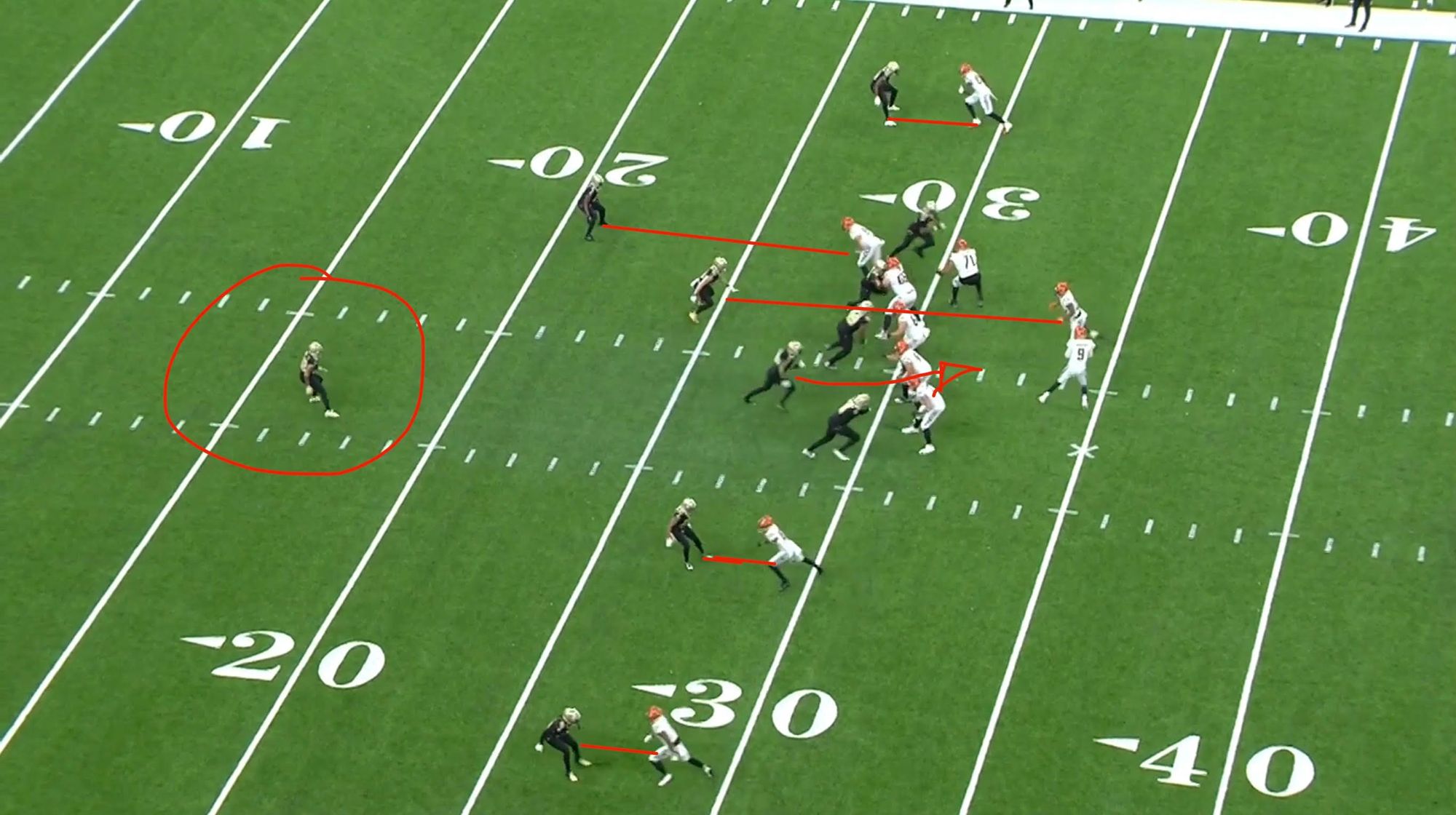
How Defenses Defend Bunch Formations in Cover 1
Bunch formations are commonly used to attack man to man. They prevent press coverage across the board, and allow for rubs and picks to create separation if facing very talented corners. Defenses employ these strategies to defend bunches:
Lock and Levels:
In the "lock" strategy, defenders maintain their man-to-man assignments regardless of the receivers' movements. In "levels," defenders are assigned to different depths, allowing them to switch assignments as receivers cross or release.
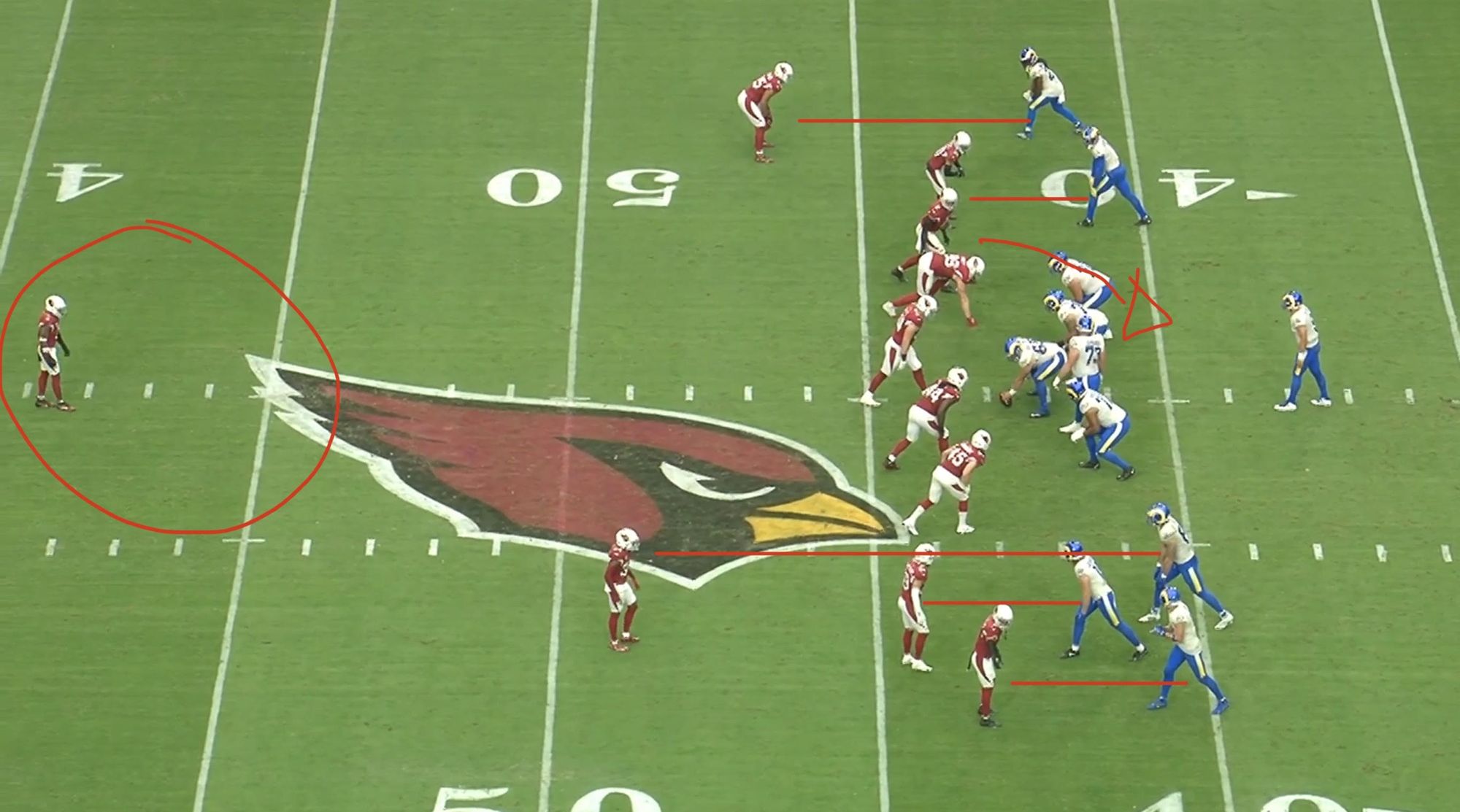
Press the Point with In and Out:
In this approach, the defender closest to the line of scrimmage presses the point receiver, while the other defenders play "in and out" coverage. (I.e. As routes declare, innermost corner takes the innermost route and the outermost corner takes the outermost while the point man stays locked on his assignment.)
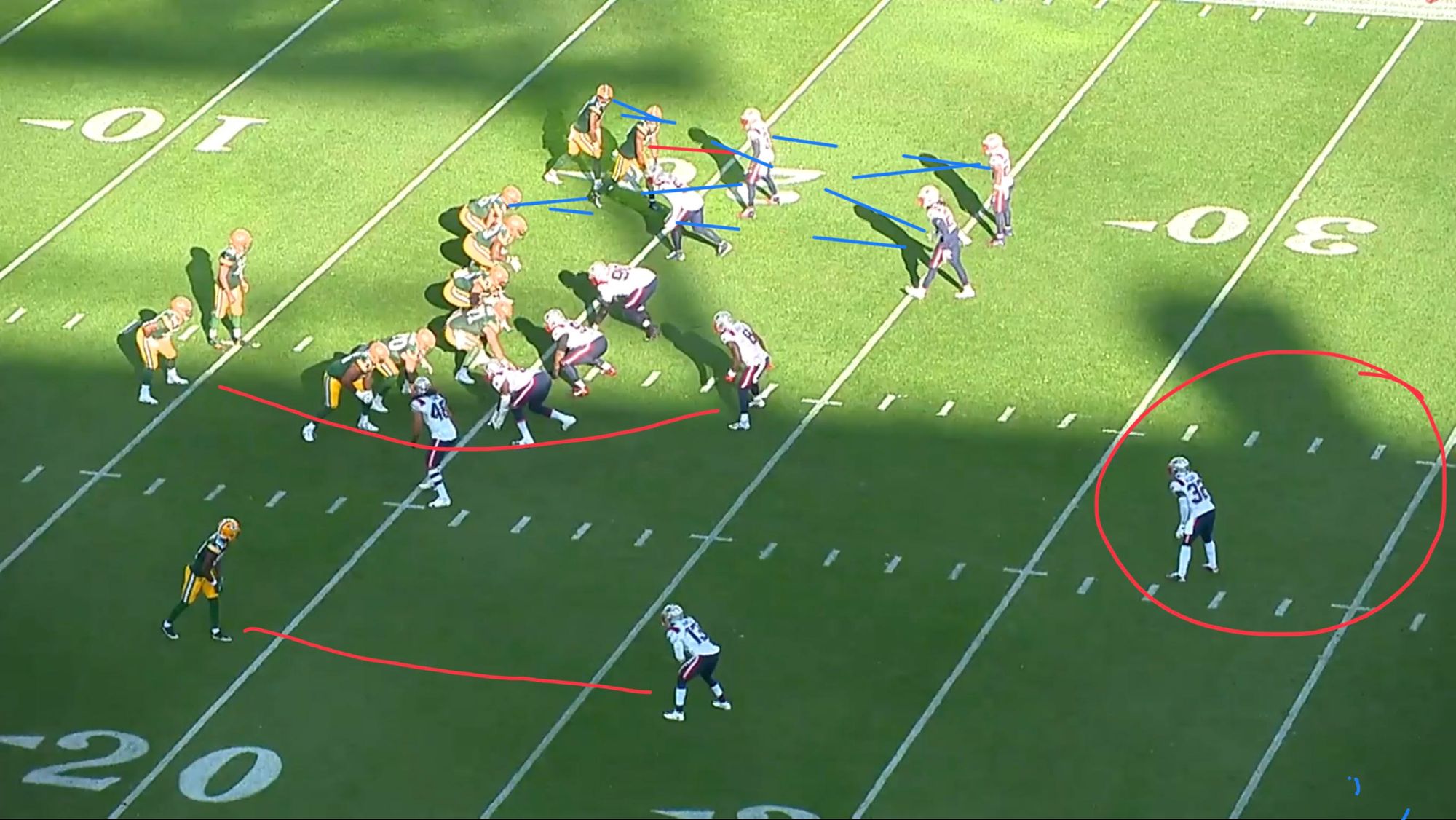
Top Hat:
The "top hat" technique typically involves two of the outside corners in a bunch. The defender who is pressing the point covers one of the off the ball wideouts, not the point man in the bunch. The outside corner covers the point man.

As a quarterback, it's important to understand the variations of man a defense will employ as well as how they will defend a bunch. You can then play chess and design plays to exploit the Cover 1 tendencies that your opponent typically uses.
Conclusion
The cerebral part of the game is what differentiates great quarterbacks. A solid understanding of the intricacies of Cover 1, its variations, and strategies for its employment is essential for maximizing probabilities of success when facing this coverage. By recognizing its strengths and weaknesses, as well as the different variations, quarterbacks can anticipate where the ball should go and have a higher success rate on the field. The half-second you gain by anticipating can be the difference between winning and losing.
Final Thought: I did not cover I-Formation vs man coverage, but essentially, the two linebackers are playing in and out on the fullback and running back.
From experts who work with 25+ NFL QBs, get personalized QB-specific throwing, arm care, lifting, speed training and biomechanical analyses for your team by booking a call here!
